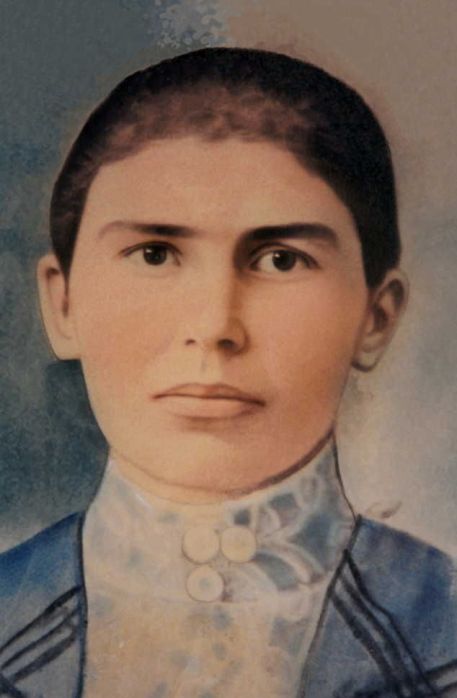Alapetsa O’Keefe
July 21, 2021
For July and August, the Vernon Museum will share a series of articles that explore some of the many heritage sites around the North Okanagan. To plan a visit to any of the sites featured, please visit https://vernonmuseum.ca/explore/heritage-field-trips/.
Beauty & Bounty
Cornelius O’Keefe arrived at the head of Okanagan Lake in 1867, with his partners Thomas Greenhow and Thomas Wood, and a large herd of cattle.
Struck by the beauty and bounty of the region, O’Keefe decided to pre-empt 160 acres of land to start a ranch. With time, the O’Keefe Ranch grew to cover around 12,000 acres.
Long before O’Keefe’s arrival, the area was the traditional land territory of the Syilx People of the Okanagan Nation. For them, it was their home and native land, on which their culture can be traced by 10 centuries, and where many Syilx People live to this day.
Alapetsa
The area was also home to a woman named Alapetsa.
Alapetsa (Rosie) was born to Stalekaya (Francois) and Sararenolay (Marie) circa 1850. Around 1869, she began living with Cornelius O’Keefe in a common-law marriage, and working around the ranch.

A portrait of Christine Catherine O’Keefe, the daughter of Alapetsa and Cornelius O’Keefe (O’Keefe Ranch Archives)
A daughter, Christine, was born to the couple about 1871. They had at least one other child, a son, who is believed to have tragically drowned at a young age.
Indigenous + Settler Unions
Alapetsa and Cornelius O’Keefe’s relationship was not a unique one. Most early European male settlers to the Okanagan Valley had an Indigenous partner, who provided the ranchers with companionship and assistance around the homestead. These partnerships were not legal marriages in a European sense, but they were considered binding.
While many ranchers formed true bonds of love and friendship with their Indigenous partners, societal pressure to remarry a more “proper” (that is, a European) wife, often resulted in the dissolution of these relationships and the disenfranchisement of the their Indigenous wives after only a few years.
societal pressure
The relationship between Cornelius and Alapetsa was dissolved before he married a white woman in 1875. She remained in the area, raising her daughter Christine, and is believed to have eventually married a man named Michele. Alapetsa passed away in 1905.
To learn more about Alapetsa, as well as other powerful and unique women involved in O’Keefe Ranch, sign up for a Heritage Field Trip to O’Keefe Ranch on Friday, July 30, 2021.
Gwyn Evans
